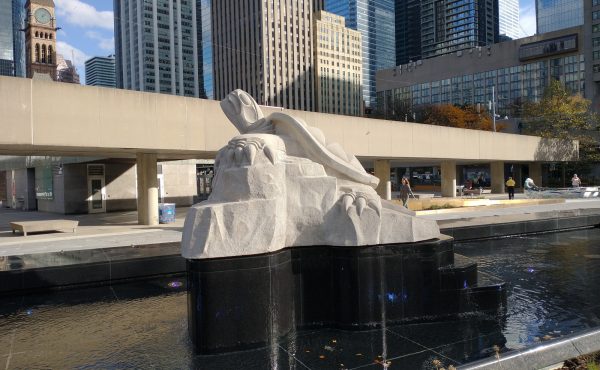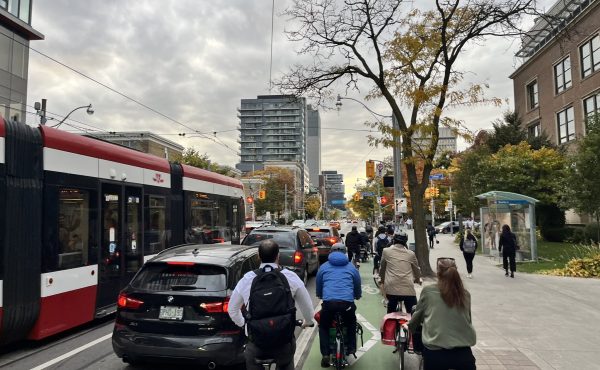At the Toronto Cyclist Union’s—sorry, Cycle Toronto’s—annual general meeting a few evenings ago, Andrea Garcia, Director of Advocacy and Operations, spoke about the need to change the conversation on bicycle infrastructure in this city from one of ideology and politics to one of public safety. At present, we have an administration that views each bike lane as a small siege waged by cyclists against beleaguered drivers who are called upon to rise up and defend their inalienable right to that road space (something the BBC has recently picked up on, too). The installation of a bike lane, bike boxes, and other cycling infrastructure, however, should be spoken about as a way to make the streets safer, not just for cyclists, but for all road users.
And that is, in fact, what they are doing. Take Jarvis Street, for example.
The Toronto Cyclists Union has drummed up a City staff report [PDF] that compares crash data in the three years previous to the bike lanes and the one year with the bike lanes. The report finds that the overall crash rate for Jarvis has actually decreased by 23 percent. That’s for all road users—bicycles, cars, and pedestrians. In fact, the report notes that “most of this reduction can be attributed to the reduction in collisions involving motor vehicle turning movements and collisions involving pedestrians.”
But the bike lanes have also been better for cyclists. While the number of bicycle-car collisions has increased from an average of 7 per year in the three years prior to the bike lane to 15 in the year with the bike lane, the report notes this still represents a drop in the rate of collision when you take into consideration the fact that the number of bicycles increased threefold post-bike lane implementation.
It’s important to point out that they do urge people to use caution when interpreting the data since it compares data averaged out over three years to data collected in one year, noting that there can be significant changes from year to year. Data should be collected for another two years in order to fully understand the implications of the bike lanes on road safety. Unfortunately, the chance to do that seems slim.
One of the frustrating things about this administration is its willful blindness to the facts—facts found even by their own staff. A staff report [PDF] showing minimal car travel time delays after the installation of the Jarvis bike lanes was completely ignored as many councillors continued to conjure up images of gridlocked Torontonians missing dinner with their families as they sat bumper-to-bumper on Jarvis. It’s this kind of ridiculous myth-making (the so-called St. Clair disaster, anyone?) that is an insult to the people of this city and to City staff.
If the City goes ahead with the plan to scrub out the Jarvis bike lanes and restore that fifth reversible lane (at a cost of over a quarter of a million dollars, mind you), they will be decreasing the safety of that street. Not just for cyclists, but for drivers and pedestrians. For everyone.
It would be nice if, as Andrea Garcia said, we could change the cycling conversation from one of ideology to one based on public safety. Keeping the Jarvis bike lanes would be a good first step for this administration to make in that direction.
photo by bitpicture





2 comments
> One of the frustrating things about this administration
> is its willful blindness to the facts—facts found even
> by their own staff.
Facts found by staff are even worse than facts found elsewhere. This civic administration hates its own staff.
I was hit by a truck yesterday on Jarvis. Heading southbound, the truck overtook me and then, without signalling, turned right in front of me onto Wellesley. I ran into the side of the truck (thankfully Bixi breaks are pretty decent).
The guy then got stuck in traffic on Wellesley so I cycled up to his truck and yelled a few choice words through the open window.
Long story->short, no infrastructure can keep you safe from ignorance and idiocy. Bike lanes help, but you really have to believe that every other person on the road is an idiot about to do something dangerous.